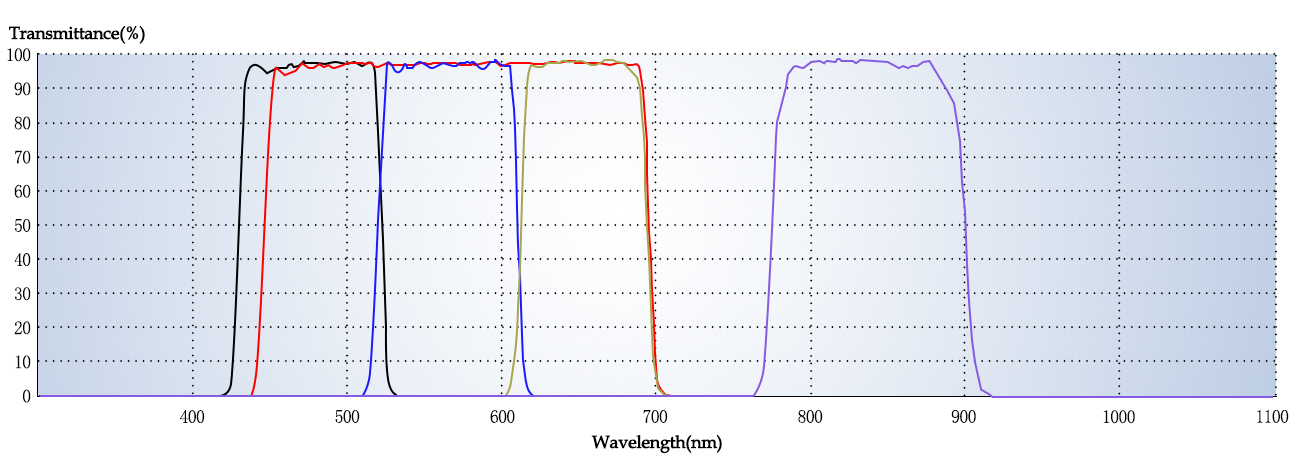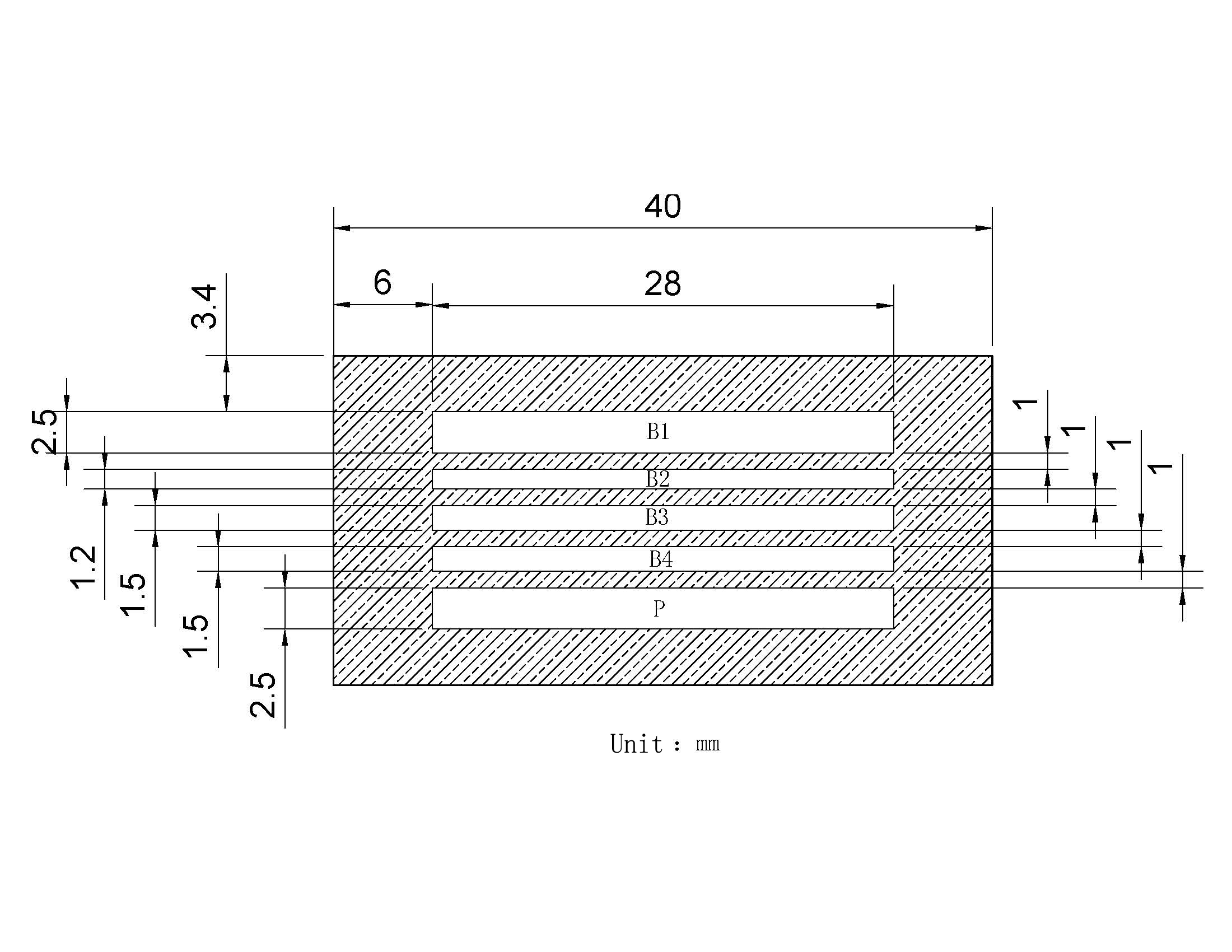Specifications:
| Central Wavelength | 450-850nm | Peak Transmission Rate | ≥92%(or customized) |
| FWHM | 50-400nm | Optical Density | ≥OD3 |
| Blocking Range | 300-1100nm | Black Masking Area | r≤3% |
| Size | 20-81mm (or customized) | Material | Optical Grade Glass |
| Surface Quality | 10/5 S/D | Graphic Dimension Tolerance | ±5μm |
Modules or Types:
| Central Wavelength(nm) | FWHM (nm) | Gradient (nm) | Optical Density (nm) | Average Transmission Rate(%) |
| 475±10 | 90±20 | 15 | OD≥3 @300-1100 | T≥92% |
| 560±10 | 80±20 | 15 | ||
| 625±10 | 350±20 | 20 | ||
| 660±10 | 60±20 | 15 | ||
| 830±10 | 120±20 | 15 |
Photolithographic Multispectral Filters are a kind of precision-produced multispectral filters manufactured using a combination of coating technique and photolithographic crafts, which is a delicate technique to produce thin-film patterns, where an optical mask is irradiated with UV light to transfer the existing geometric pattern over the optical mask to a substrate via a light-sensitive chemical process. In the initial processing procedure of the photolithographic multispectral filters, a channel-specific photomask is coated and structured using the photolithographic method. This first coating forms the apertures for the following filter coatings, where high-performance thin-film coatings are coated in sequence within the patterned apertures. Multiple thin film coatings offering high transmission to an exclusive spectrum are assembled on one monolithic substrate. This design provides overwhelming convenience in multi-spectral imaging acquisition, allowing a more compact design. Depending on the need, multispectral filters can be used in various applications, such as remote sensing image processing, medical imaging, biomedical research, environmental monitoring, and industrial inspection. In these applications, multispectral filters can help to achieve more detailed and accurate analyses of target objects or scenes.
Shalom EO offers standard and custom photolithographic multispectral filters. Regarding the standard photolithographic multispectral filters, 4-channel filters and 5-channel filters are available. Using advanced thin-film coating and photolithographic techniques, the filter separates light into multiple discrete spectral bands with sharp spectral cut-on/cut-off and exceptional transmittance within the transmission bands. Thin film coatings are deposited on optical-grade sapphire substrates with unparalleled hardness to withstand the rigors of challenging operations. A premium precision standard of 10/5 S/D and ±5µm graphic dimensional tolerance are attained accredited to an accurate geometric regulation. Our multispectral filters provide excellent results when combined with an imaging sensor such as a CCD, CMOS, SWIR, MIDIR, and LWIR to select a specific spectral range to be imaged on several pixels.
Transmission Curves of our standard photolithographic multispectral filters:
As shown in the transmission curves, our sample photolithographic multispectral filter exhibits high and flat transmission performance in the designed spectral channels, and effective rejection of the unwanted light.

Drawing:
